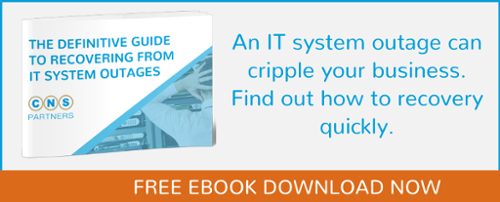
In early May of 2019, a particularly virulent strain of ransomware called RobbinHood struck the city of Baltimore. This was a large-scale and high-profile attack that attracted media attention around the world and ultimately cost its victim more than $18 million. Residents were unable to pay fines, taxes, or bills for municipal services, and real estate transactions were temporarily halted, to the detriment of the local housing market. Public outcry in the wake of the incident was intense, resulting in the dismissal of the city’s chief information officer (CIO).
 Today, Baltimore residents have access to one of the best-designed and most convenient online municipal revenue collection systems in the country. The city has moved much of its IT infrastructure to the cloud, with the ultimate goal of improving resilience and reducing hardware expenditures. Network infrastructure and data cabling have been modernized, making connectivity faster and more reliable. And Baltimore is upgrading its enterprise resource planning (ERP) system to improve the efficiency of all the city’s operations.
Today, Baltimore residents have access to one of the best-designed and most convenient online municipal revenue collection systems in the country. The city has moved much of its IT infrastructure to the cloud, with the ultimate goal of improving resilience and reducing hardware expenditures. Network infrastructure and data cabling have been modernized, making connectivity faster and more reliable. And Baltimore is upgrading its enterprise resource planning (ERP) system to improve the efficiency of all the city’s operations.
Baltimore’s story is far from unique. Ransomware attacks are troublingly commonplace, and increasingly damaging, costing U.S. businesses more than $7.5 billion in 2019, according to one report. Nor are cyber criminal activities the only—or even the most common—cause of IT system outages. Instead, the majority of unplanned downtime (59 percent of it, in fact) is due to human error, a rate that has remained consistent over the past few years.
Many small to mid-sized manufacturing firms may find it easy to draw parallels between the state of their IT infrastructure and Baltimore’s, at least prior to the attack. The municipality had been widely criticized for failing to upgrade hardware, patch outdated operating systems, or make necessary investments in employee training, disaster recovery planning, or ensuring that it had reliable backup systems in place. This is understandable: when budgets are limited, it’s easy for technology updates to take a back burner to more urgent concerns. And it’s common for many organizations, in the private and public sectors alike, to take an “if it ain’t broke, don’t fix it” attitude towards IT.
But Baltimore’s story can also serve as an object lesson in how to make lemonade from the particularly bitter lemons of a disruptive and potentially devastating incident. By turning downtime into an opportunity to upgrade the aging systems that had put them at risk, Baltimore’s leaders greatly reduced their chances of ever again falling victim to the same type of crime. What’s more, the new solutions they’ve put in place support the city’s ability to deliver essential services to residents far better than their old ones did, positioning them as leaders among the most tech-savvy local governments, and readying Baltimore for success in the twenty-first century.
An unplanned outage is the perfect opportunity to modernize your tech stack
There’s no way around it: downtime is expensive. Its average cost to businesses is in the neighborhood of $5,600 per minute, with hourly estimates ranging from $140,000 to $540,000, depending on the size and type of firm affected. In addition to the expenses you’ll incur during the process of recovery, you’ll suffer from lost productivity and revenues while still being responsible for labor costs and operating expenditures. And your long-term relationships with customers and suppliers may be permanently damaged if you’re unable to deliver what you’ve promised them.
In many cases, the fastest path to resumed operations is also the cheapest one, since the per-minute costs of downtime not only add up incrementally, but can also increase exponentially when you begin to factor in intangibles that are not easily recovered—things like lost customer trust or damaged brand reputation. Be sure that you’re including the hourly costs of emergency IT services when you're comparing costs, since these can mount quickly. Often, repairing legacy equipment can take longer, and thus be much more expensive, than simply replacing aging hardware with modern state-of-the-art systems built to support your company’s growth and enhance productivity.
Investments in IT infrastructure will pay off over the short AND long term
 In today’s always-on and increasingly interconnected world, reliable Internet access is essential to sales teams’ success. Better process monitoring can contribute to greater productivity with the same number of employees. And modern software solutions give company leadership far better visibility into day-to-day operations, allowing them to resolve issues—and optimize operations—faster than ever before.
In today’s always-on and increasingly interconnected world, reliable Internet access is essential to sales teams’ success. Better process monitoring can contribute to greater productivity with the same number of employees. And modern software solutions give company leadership far better visibility into day-to-day operations, allowing them to resolve issues—and optimize operations—faster than ever before.
It’s likely that you’re aware of the benefits of top-of-the-line industrial equipment and know that even with the best predictive maintenance schedules, aging machines will eventually become more expensive to operate than to replace. Older equipment simply needs more frequent repair and recalibration, and eventually these processes become slower and more expensive. Newer machinery will allow you to produce higher quality products faster and more consistently, with less downtime, giving you an advantage over your competitors and a foundation for growth.
What’s true of the machinery in your plant is also true of the IT equipment supporting your operations and connecting your business to the outside world—the network of customers, vendors and suppliers, and partners that you depend on every day. Investments in hardware, network infrastructure, and cabling and connectivity solutions are just as essential to manufacturers’ ongoing success as investments in the right industrial equipment.
The silver lining: enhanced security, productivity, growth potential
The reality is that IT infrastructure has a much shorter useful lifespan than industrial equipment. If your hardware or software is over five years old, it’s likely that it’s no longer benefiting your business. Legacy IT equipment and outdated software is more difficult to maintain and administer than newer versions, resulting in misconfigurations and errors—which are, after all, the most common cause of unplanned downtime. Once it’s no longer supported by its vendor, aging hardware and software poses major security risks, since cybercriminals can easily exploit its known vulnerabilities.
With upgraded systems, you’ll benefit from recent security enhancements, of course. But you’ll also be able to take advantage of newer technologies like cloud computing that will give your company more flexibility, enhanced capabilities, and greater reliability and resilience—all with more predictable costs.
Whether it was caused by a cyberattack, a local emergency or natural disaster, or resulted from a simple mistake, an unplanned IT outage can be highly stressful and very expensive. But companies that transform downtime into an opportunity to replace legacy hardware and software stand to accelerate the pace of their recovery. Make the right investments at this critical time, and you can save time and money now, as well as support the growth of your business for years to come.
Want to learn more about best practices for recovering from system outages and IT disasters? Download our new eBook, “The Definitive Guide to Recovering from IT System Outages” today.



